The celebrated Mr. K explains why Gotham is in New Jersey, Metropolis is in Delaware – and much, much more…
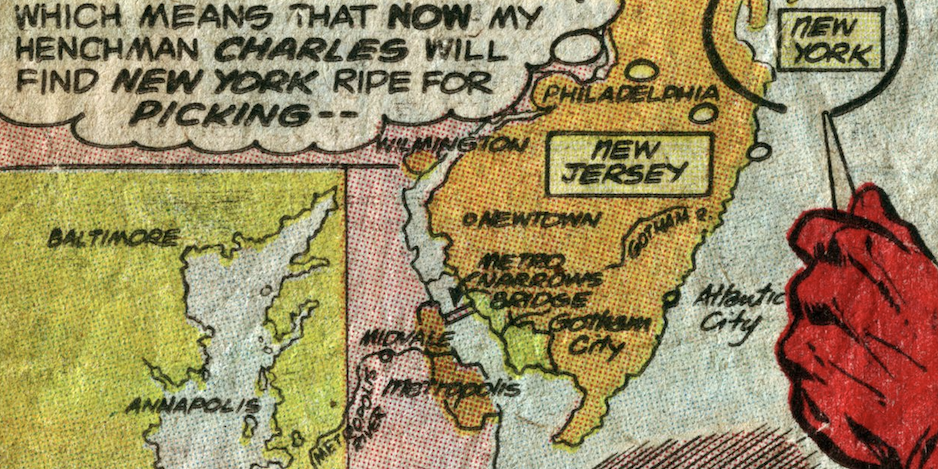
—
UPDATED 7/11/24: James Gunn’s Superman places Metropolis squarely in the tiny of state of Delaware. Click here for more on that — but what makes it such a kick is that our pal Paul Kupperberg had a big hand in it. So that makes this the perfect time to reprint this piece from June 2021. Right on! — Dan
—
By PAUL KUPPERBERG
In 1989, I took on the assignment from hell… I mean, I accepted a gig from Mayfair Games, publishers of role-playing games (RPG) and sourcebooks therefore. This is not to say anything negative about the fine folks at Mayfair, who were unfailingly good to me during the process of working on The Atlas of the DC Universe and the earlier Doom Patrol module storyline I wrote for them (“Moonshot,” recently reprinted in the Doom Patrol Bronze Age Omnibus).
This is to say that the experience of actually writing this monster was one of the least pleasant of my career (see Fascinating Fact #2, below) because of the thousands of little details that needed to be collated and banged into the proper order. On the upside, the finished product turned out to be something I’m proud of and I’m happy to see it’s been of use to my fellow creators in the DCU (see Fascinating Fact #13).
Here then, are 13 FASCINATING FACTS ABOUT THE ATLAS OF THE DC UNIVERSE:
—
1. The cover was drawn by Blue Devil artist Paris Cullins… not that the designers gave him anything interesting to draw so that you could actually tell who the artist was.
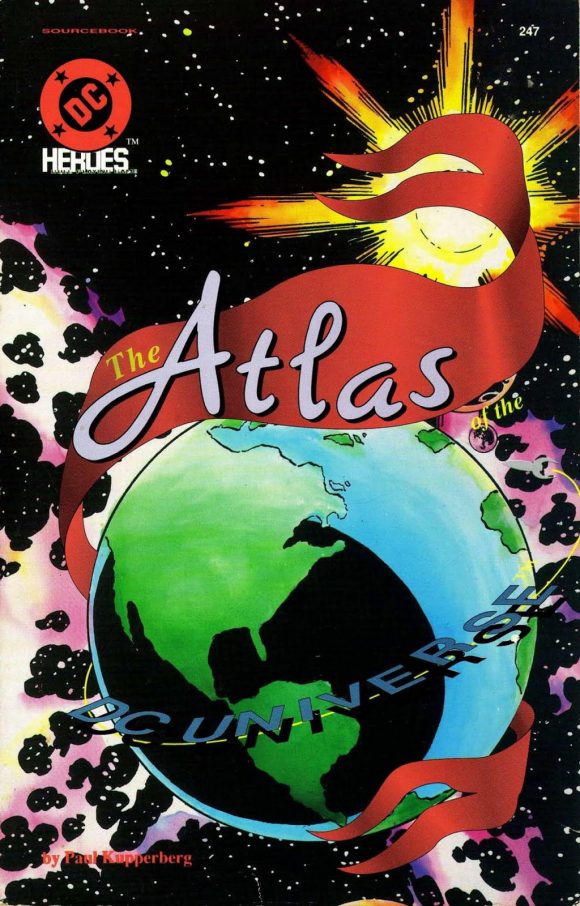
—
2. There was no internet in 1989 when I wrote the Atlas. Research was done the old-fashioned way, by going through the old stories in DC’s library, photocopying relevant pages, and compiling stacks and stacks of notes and reference material, which always ended up getting strewn all over and around the desk during the writing process, and was usually missing some vital bit of information that would need to wait until the next trip to DC for me to research it. I could have written it in one-third the time (and with none of the headaches) if I’d only had Wikipedia.
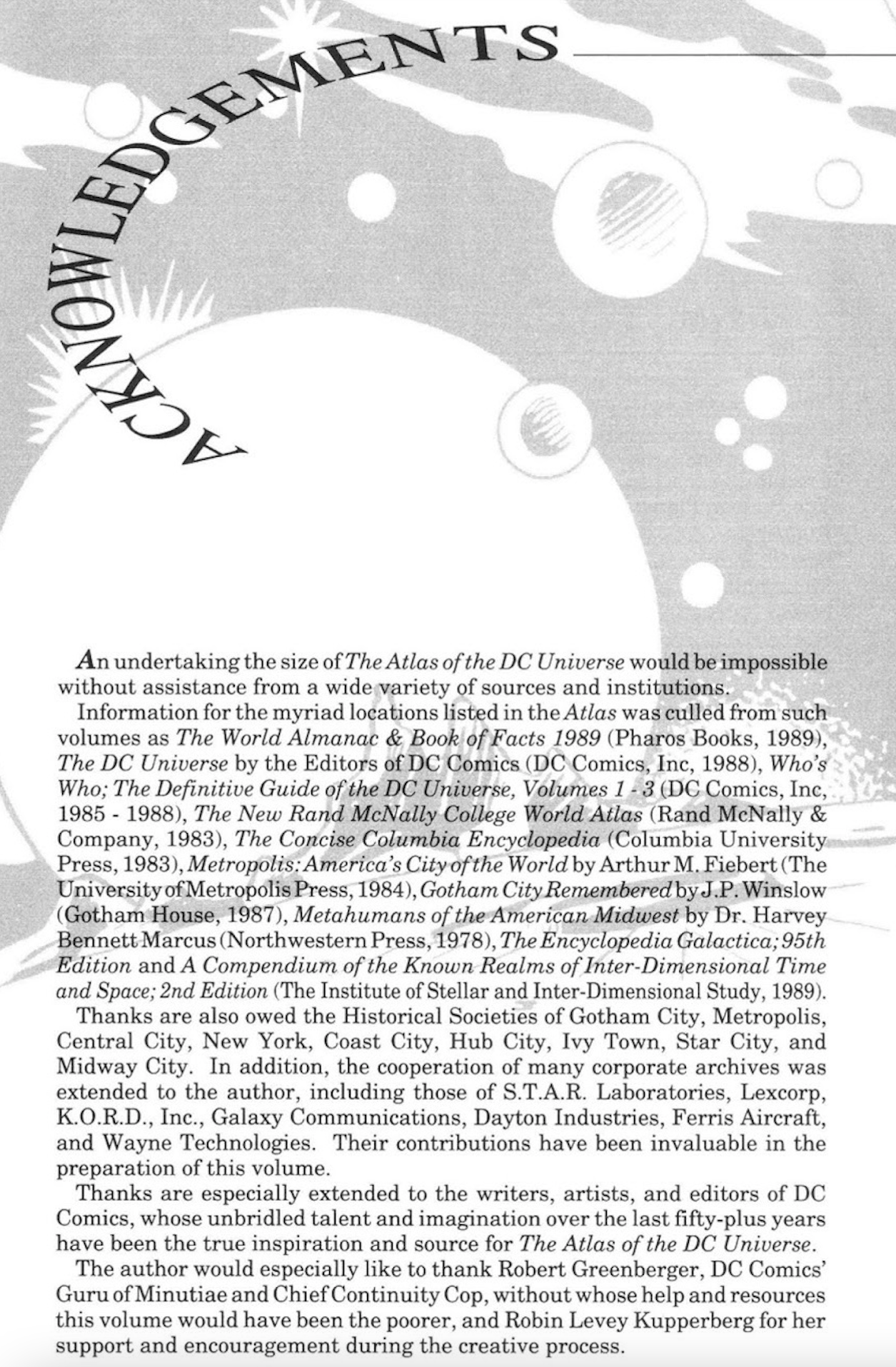
—
3. I made up most of the history for most of the cities and towns as I was writing those entries. Take a place like Ivy Town, location of Ivy University, where Dr. Ray Palmer, aka the Atom, worked and taught, and where K.O.R.D. Industries had a manufacturing plant. The previous sentence very likely contains the sum total of what had been established for Ivy Town in the comics over the years, forcing me to just make sh*t up so I’d have enough to fill a book; Ivy Town “so named for the almost epidemic growth of ivy vines they were forced to clear so they could build their new homes”? Sure. Why not!
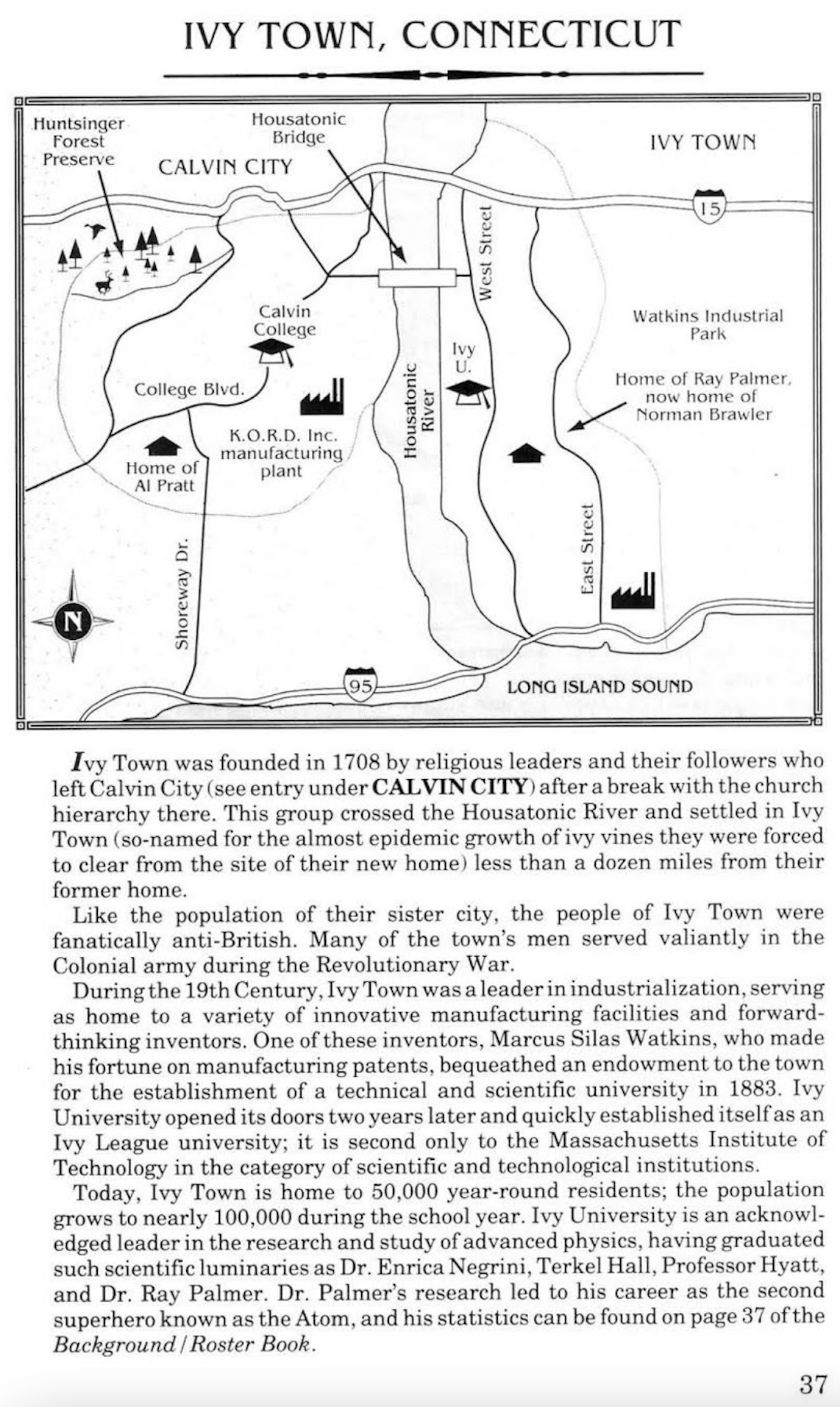
—
4. Along with the fictitious cities and towns of the DCU, the Atlas also covered make-believe counterparts of “real world” (Earth-Prime, if you will) cities. The entry for New York covers four pages, including a map. At a glance, I’d say that — references to Titans Tower, the Justice League International Embassy and a few other such DC additions aside — the entry is historically accurate.
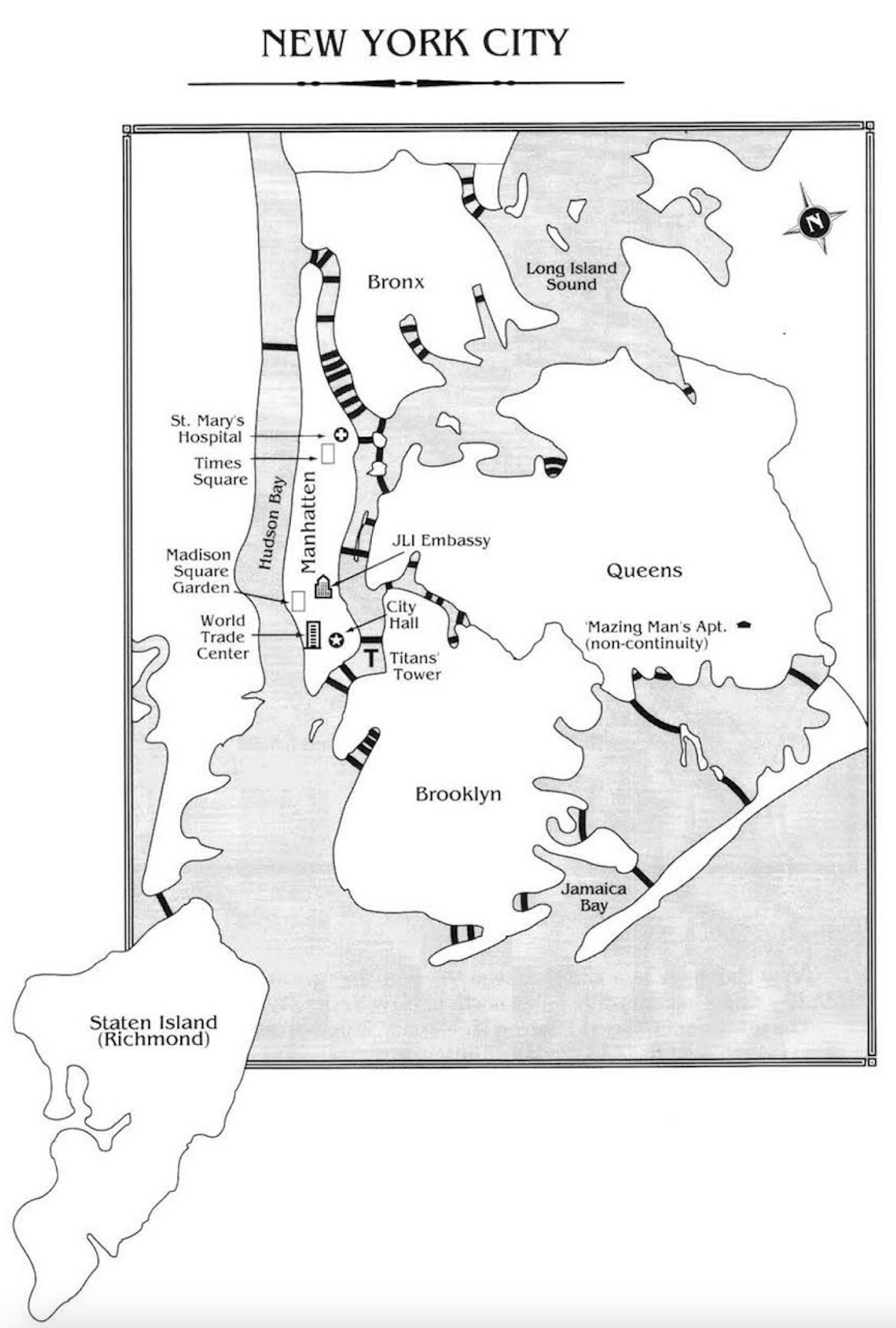
—
5. On top of having to write the thing, I also had to provide “sketches” for the maps of the cities that accompanied the entries, both real and fictional. Those were, of course, turned into something presentable for the reading public.
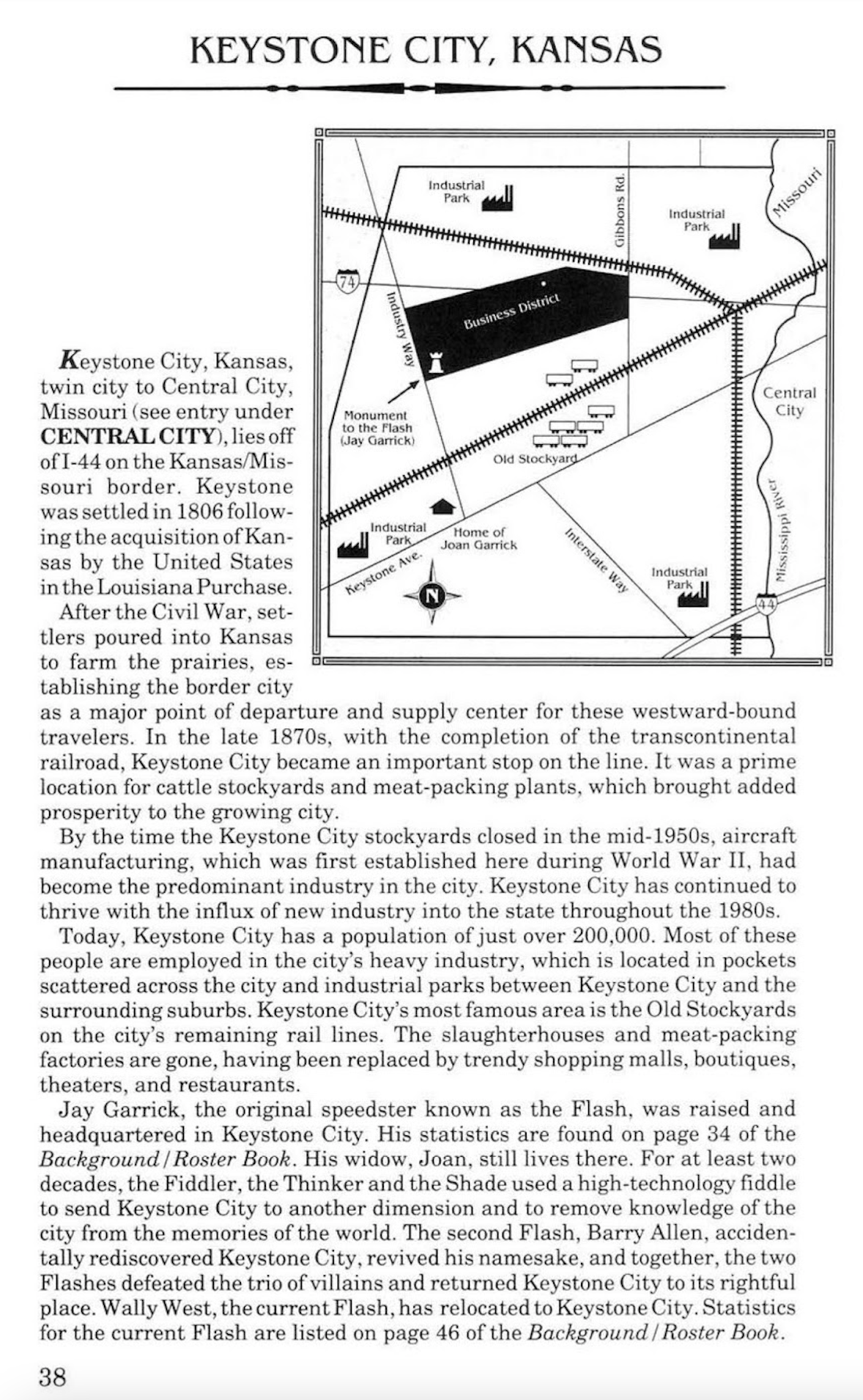
—
6. I have to hand it to Mayfair; for the full-color foldout maps of the US and the world, they shopped that job out to master mapmakers Rand McNally, which had been doing this stuff since 1872. Admittedly, it looks like a regular Rand McNally map of the US, just with all the made-up places spotted in there with the real cities. But still — Rand McNally.
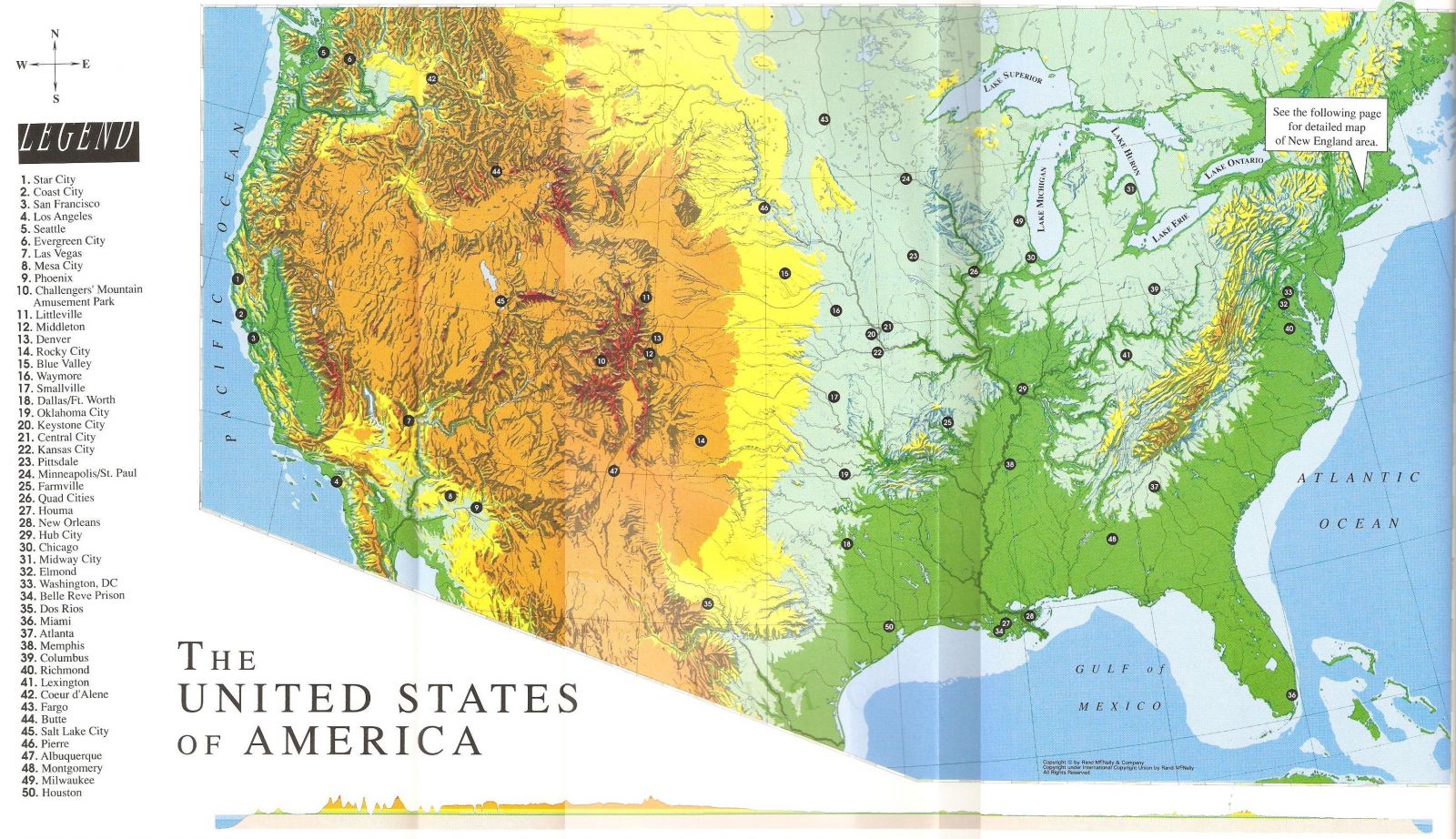
—
7. The Atlas was published as a sourcebook for an RPG so it’s full of information like “power levels” and “skills” and “drawbacks” for characters who inhabit all the places it covers. I didn’t write any of that stuff. I don’t even know what most of it means.
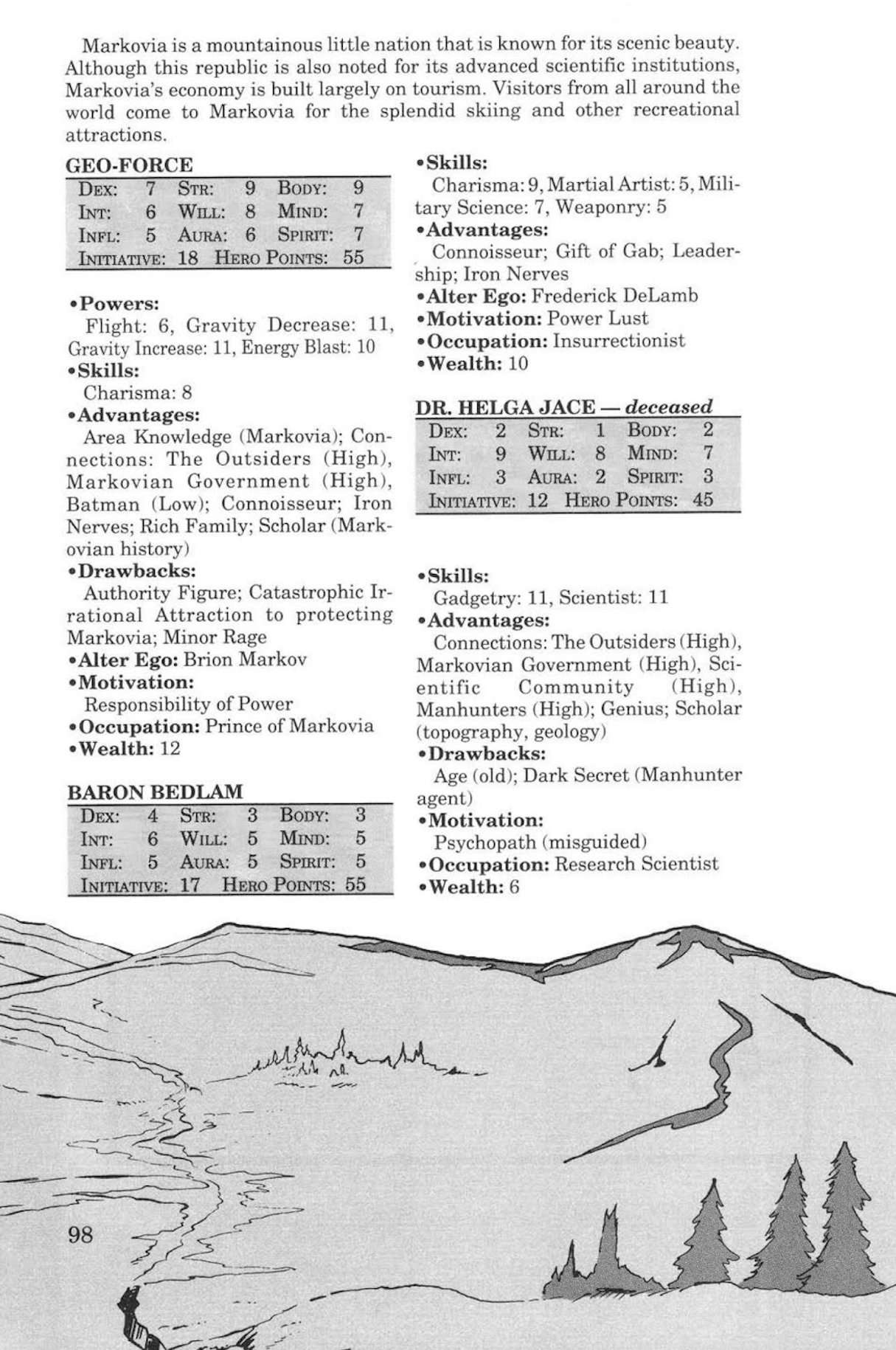
—
8. Contrary to popular belief, the decision to locate Gotham City in New Jersey and Metropolis in Delaware was not arrived at willy-nilly. There was precedence for it; a panel from a 1978 World’s Greatest Super-Heroes syndicated Sunday strip by Martin Pasko and George Tuska that clearly places them south of New York on the Eastern seaboard. Denny O’Neil famously described the two cities as Metropolis being NYC above 14th Street and Gotham being NYC below it, but New York’s gotta be somewhere so Metropolis and Gotham had to be moved. I like to think that Jersey being the state Marty grew up in had some influence on the decision. (Note from Dan: I still pretty much live by O’Neil’s description – especially the angle that Metropolis is above 14th on a beautiful spring day and that Gotham is below 14th on a rainy late-autumn night!)
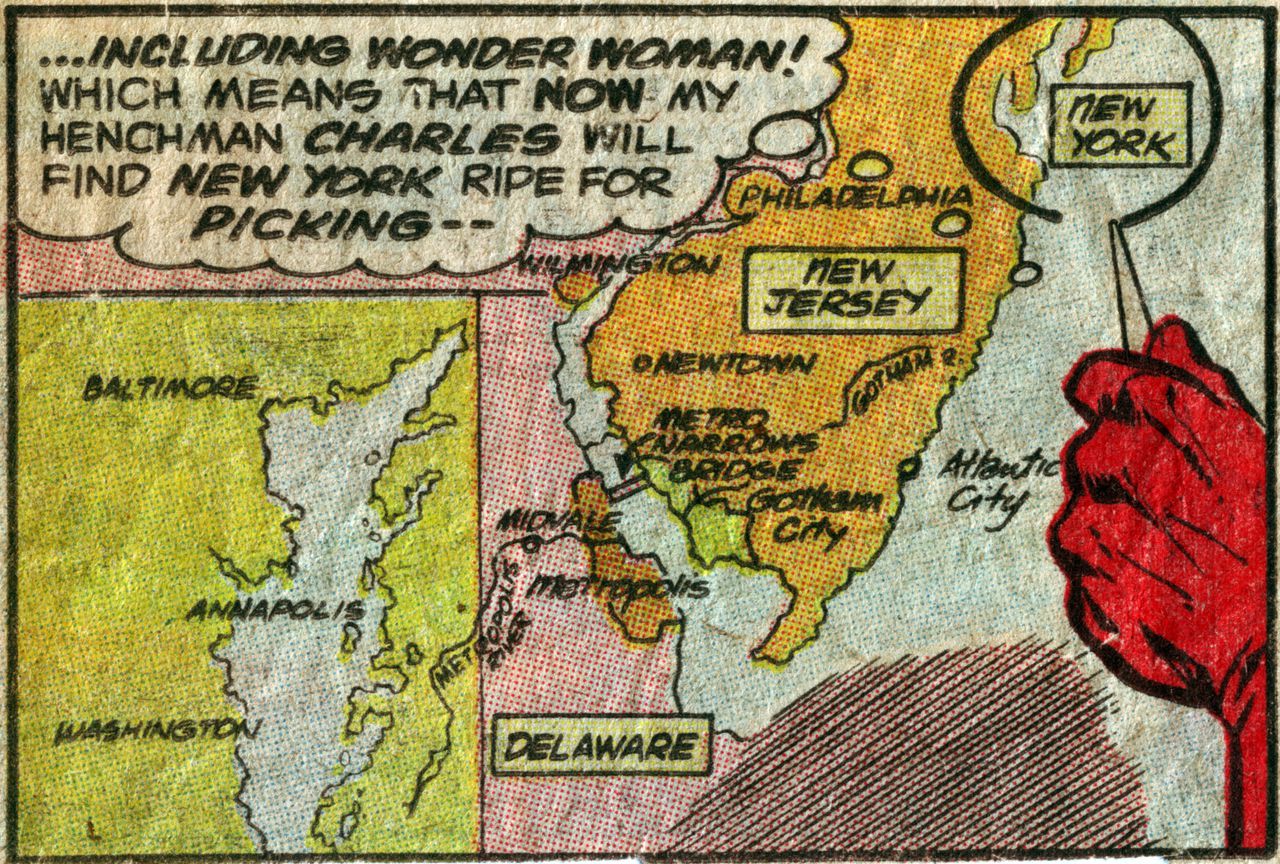
—
9. Some of the entries were a little easier than others to write, including the ones for Atlantis and the other-dimensional Darkworld from my series Arion, Lord of Atlantis. If nothing else, I didn’t feel like I was stepping on another creator’s toes by making up back stories that didn’t fit in with their plans. Fortunately, for the broad strokes of most character histories, I did have the benefit of Who’s Who: The Definitive Directory of the DC Universe (now causing hernias throughout fandom in the recently released omnibus edition, Vol. 1) to refer to.
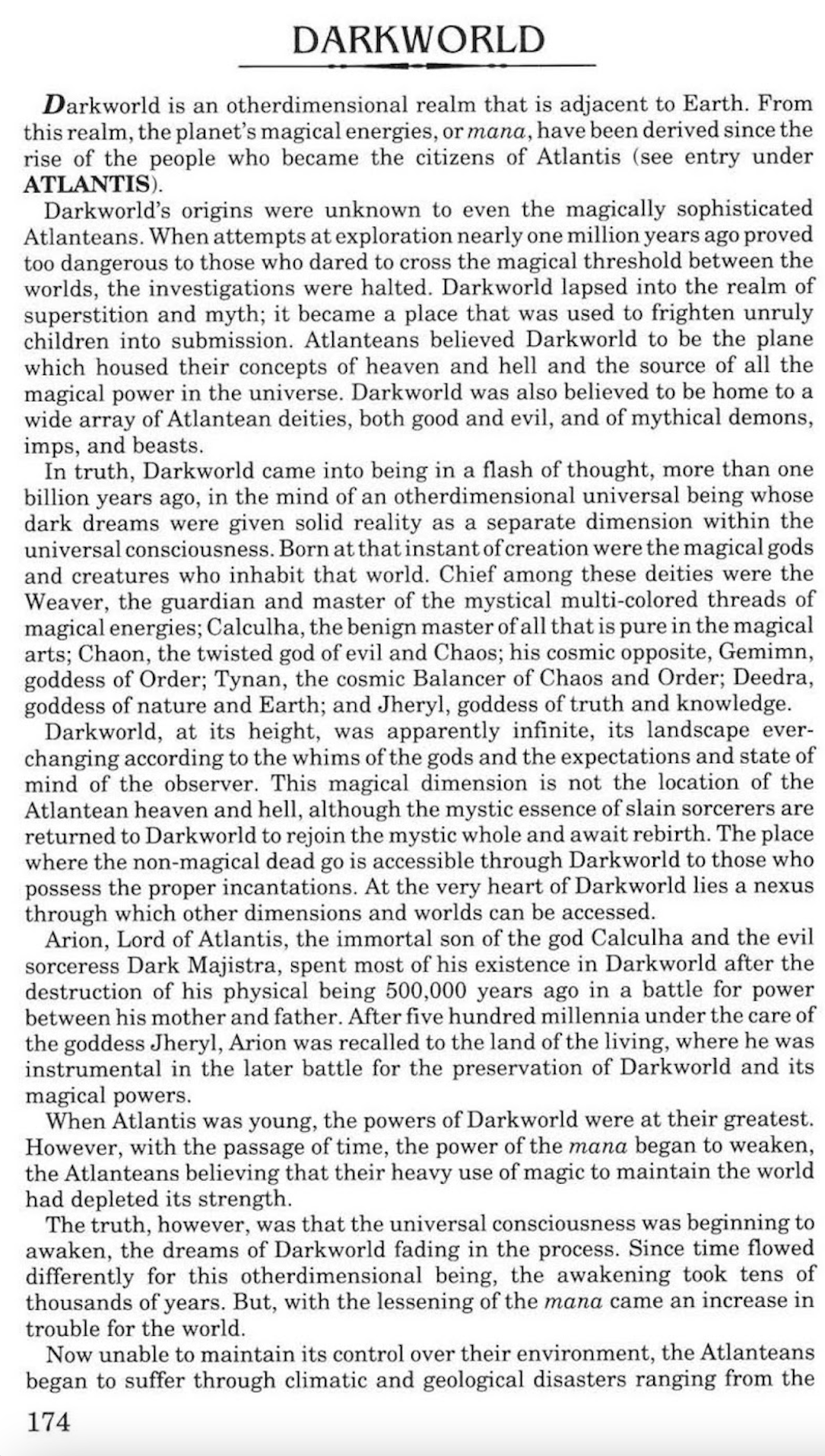
—
10. The Atlas went deep into the DCU, including page after page describing businesses, media outlets, fast-food franchises, and even sports teams. I may know absolutely nothing about sports and have less than zero interest in them, but I did learn what it takes to make up names for teams.
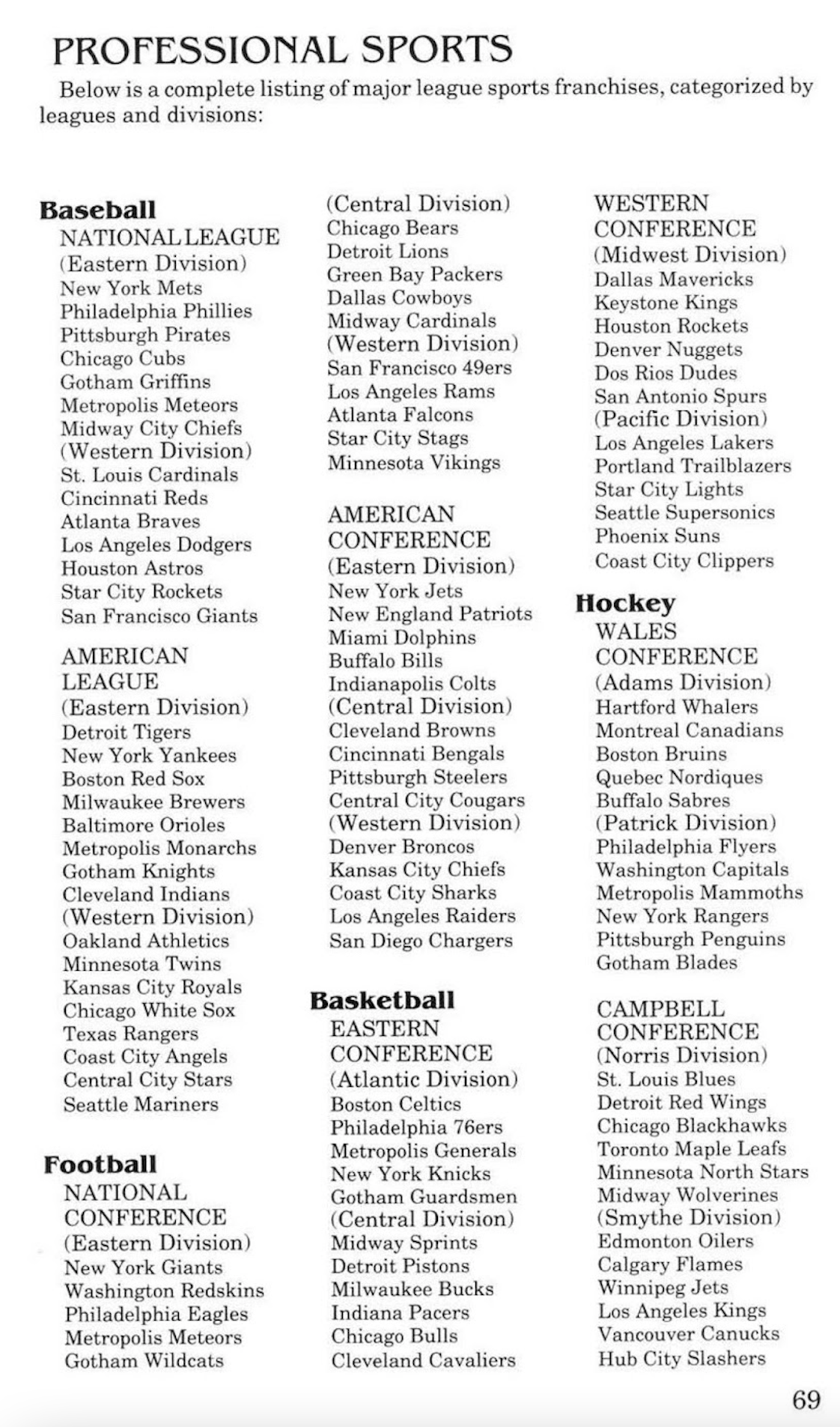
—
11. I did indulge in a few entries included for my own amusement, including this one for Austanburg, a little Western European country I created near the end of my run on Checkmate in the 1980s. I was fairly certain no one would ever be picking up on this rinky-dink country (or Cypher Industries, a company associated with it and for which I included an entry in the “Science and Technology” section), but I felt it deserved a few hundred words, just because.
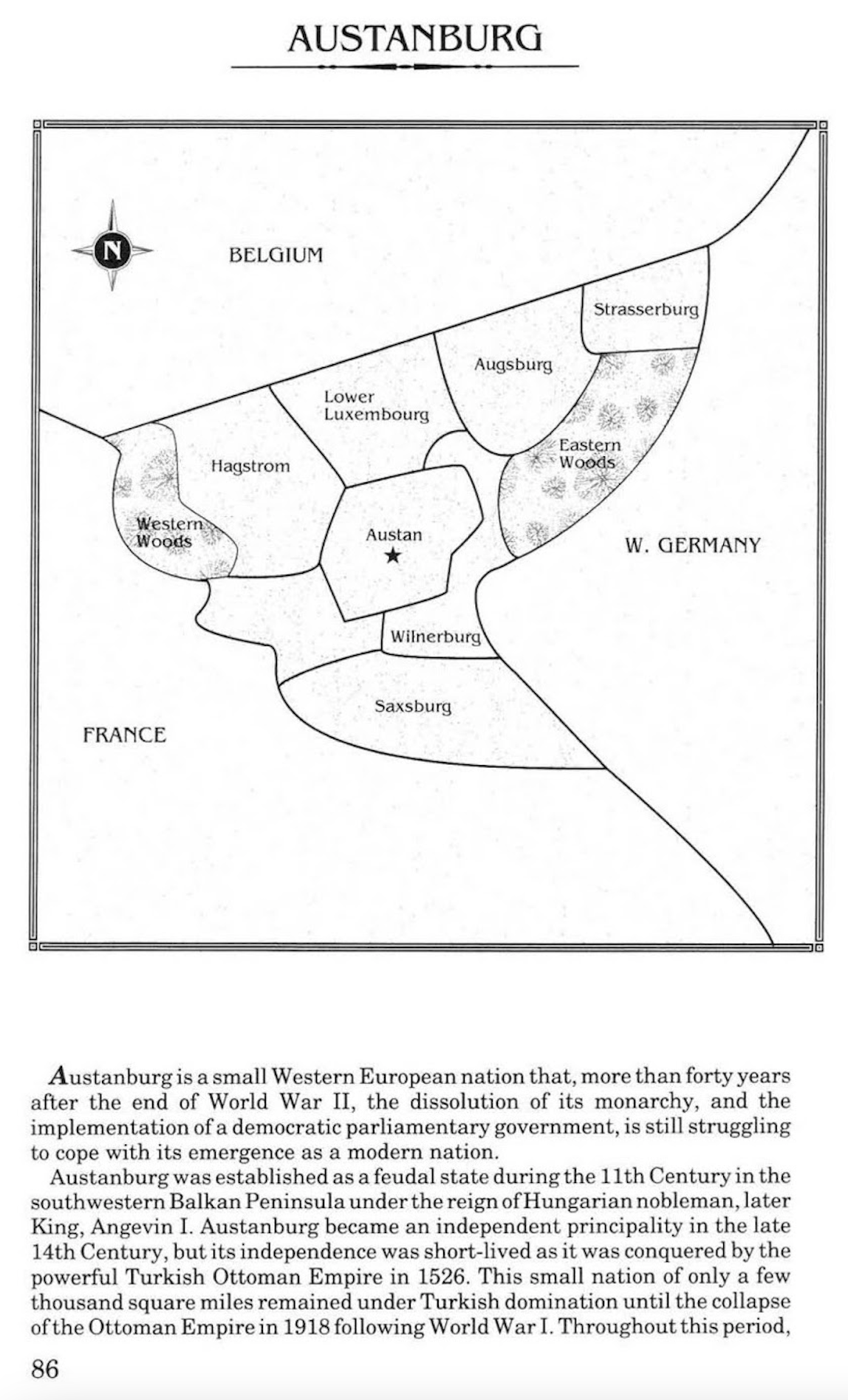
—
12. The longest entry in the Atlas by far was the one on Atlantis, running 10 pages, compared to the three or four pages each devoted to Metropolis and Gotham City. I don’t know exactly why that was except it shows just how important a role Atlantis has played in the history of the DCU. Go figure.
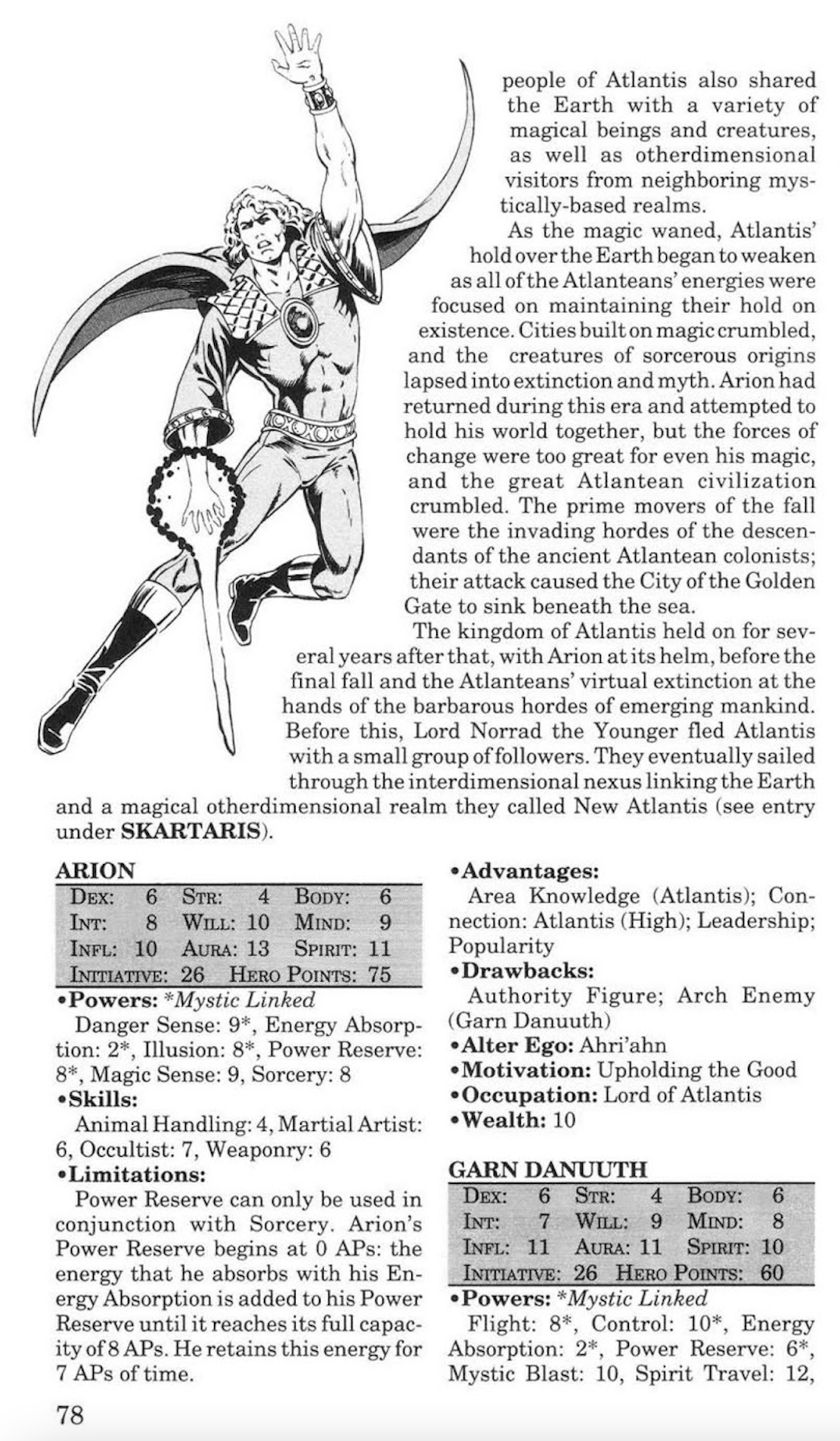
—
13. Though never meant to be canonical, The Atlas of the DC Universe nonetheless turned into the go-to guide for not only the RPG community but for many DCU writers and editors as well. With no other one-stop source for this sort of information then available (remember: pre-internet!) nobody much cared that it had been written to be used with eight-sided dice. As long as they could look up what they needed to know about Littleville, Wyoming (hometown of Dial H for Heroes’ Robby Reed) for that epic they were working on, they were satisfied.
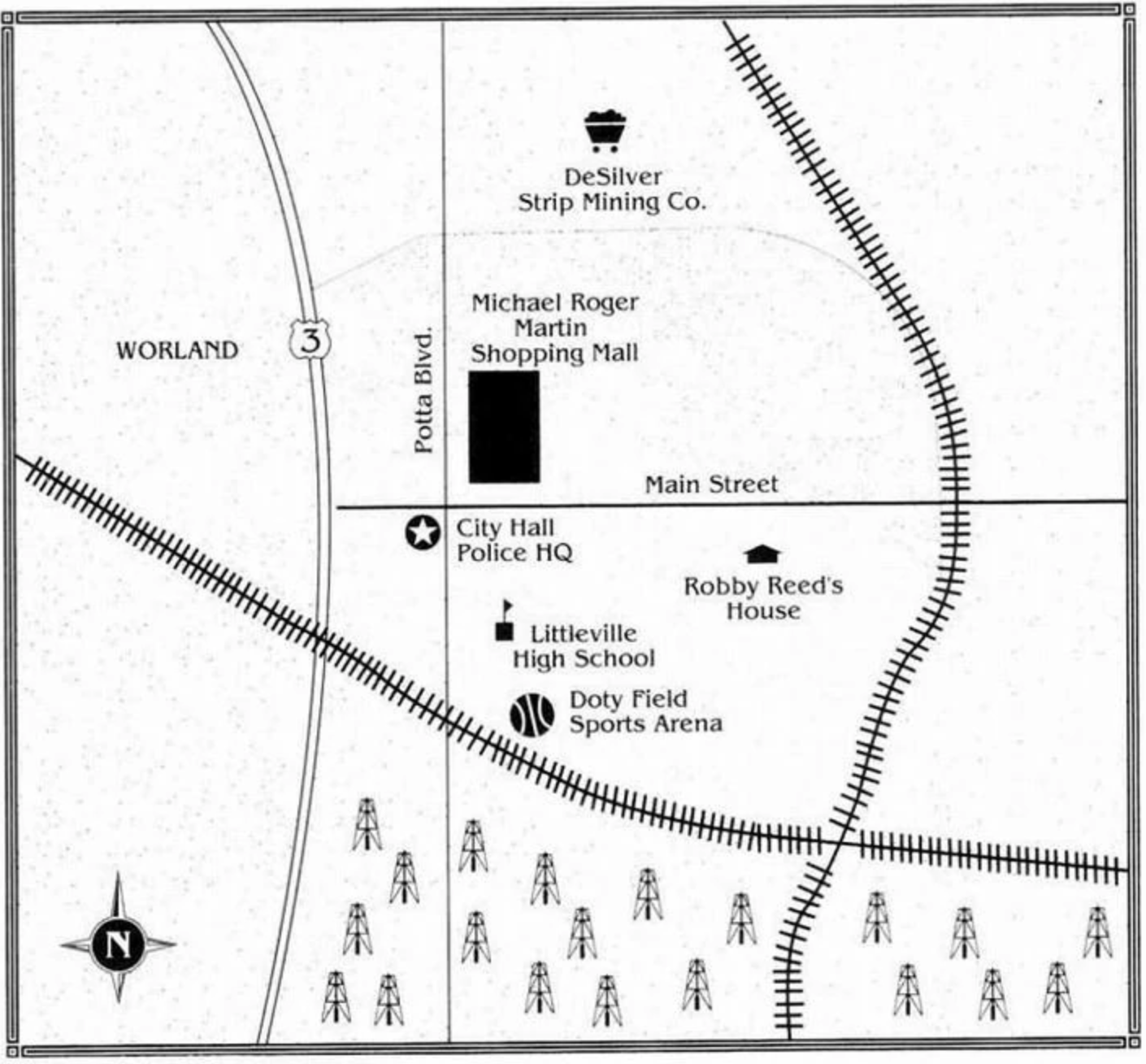
—
MORE
— The TOP 13 Greatest Classic DC COMICS ROLE-PLAYING GAME Supplements — RANKED. Click here.
— The TOP 13 Greatest Classic MARVEL ROLE-PLAYING GAME Supplements — RANKED. Click here.
— 13 Great Classic ROLE-PLAYING GAMES That AREN’T Dungeons & Dragons. Click here.
—
Paul Kupperberg has been writing comic books from Archie to Zatanna for 45 years at DC, Archie, Charlton, Marvel, Bongo and others. He is also the author of Paul Kupperberg’s Illustrated Guide to Writing Comics (Charlton Neo Press); I Never Write for the Money… But I Always Turn in the Manuscript for a Check (Comics Career); the comic book industry-based murder mystery The Same Old Story, the short-story collection In My Shorts: Hitler’s Bellhop and Other Stories, JSA: Ragnarok, and his latest, the YA fantasy/time travel adventure Emma’s Landing, all from Crazy 8 Press and all available on Amazon, or signed and personalized direct from Paul (email him at pkupps55@yahoo.com for details).

June 13, 2021
I think a little better knowledge of how the major leagues franchised cities might have made for a better looking sports scene in the DCU – the heavy presence of all 4 major sports teams in Metropolis and Gotham (Who like New York, Chicago, Los Angeles-Anaheim and San Francisco-Oakland apparently can support two Baseball Clubs, one in each league) would not be a surprise, but some of the other major DCU cities with only one or two of the leagues does seem a little off.
It’s hard to believe That Central would only have A baseball club (and an American League one at that) and Keystone would only have a basketball club – I would have expected Keystone might have had a football team. Considering the city being a blue-collar town, Football would have been a good fit.
June 13, 2021
OK
June 14, 2021
I still have my copy… those it has been a looooong time since I played the game. 🙂
May 6, 2023
One of my favorite supplements for my favorite game. It’s hard to beat the Book of Magic.
May 16, 2023
I lived in the real-life equivalent of Ivy Town for about 15 years–I’d say the map was fairly accurate.
As far as Metropolis goes, my assumption was always that it was out Chicago way, with Gotham being Detroit. Did anyone at DC at the time think that was the case? Just curious.
May 17, 2023
Don’t ever trust Wikipedia. Even when things are footnoted, half the time you go to the footnote and it doesn’t supprt the claim whatsoever. We’re rightly forbidden from using it as a reference source at Newsday. It’s highly sloppy and untrustworthy.
May 17, 2023
Sorry Paul, but the Internet definitely existed in 1989. In fact, there was discussion on it about the Atlas, and information from it made it into Usenet’s rec.arts.comics discussion group’s FAQ. I was there. What most people don’t know is that what’s considered the birth of the Internet happened clear back in 1969, but, particularly in its first decade, access was extremely limited. I got on in 1980 at the forefront of the first major access expansion. By 1989, if you were at a decent college, you should have been able to get access, as well as a fair number of computer science research and commercial outfits. What was still a few years away was the World Wide Web, so the amount of help you could’ve gotten from it with the Atlas would’ve amounted to posting a question in the right newsgroup/discussion forum and hoping you got back some well-informed answers (which at that point in Internet development, you probably would have).
May 17, 2023
OK
May 17, 2023
Mayfair’s DC Heroes RPG used 10-sided dice, not 8-sided as noted in the closing section.
May 17, 2023
OK
May 17, 2023
Dan, what is the abbreviation for Oklahoma?
May 18, 2023
Okla.
May 20, 2023
Should have written postal code. Can’t trick you. We still OK?
May 21, 2023
Yes we are!
May 18, 2023
I still have my copy and will pull it out to reminesce about the good old days of playing the game. It’s full of great information.
May 18, 2023
For the Keystone and Central City entry, why didn’t anyone catch that the Mississippi flows along the EAST side of Missouri, between that state and Illinois and not the WEST side between Missouri and Kansas?
May 21, 2023
The writers of the 1978 World’s Greatest Super-Heroes comic strip likely pulled their info from the March 1977 issue of The Amazing World of DC Comics (#14, the JLA issue), which listed the states of the fictional cities each JLA member operated in (e.g., Gotham City, New Jersey; Metropolis, Delaware; and even Midway City, Michigan)…
May 21, 2023
I’m not a pro-writer by any stretch of the word, but this book has been a great help to me as I’m writing a crossover of the DCU with Evangelion.
Thanks for all the hard work invested in the Atlas!!
August 22, 2023
I for one loved this book – well done Mr. K! I still have a copy along with almost all the other Mayfair DC material from 1st and 2nd edition. Was a great system and some of my fondest RPG memories.
July 11, 2024
I’ve got family in Keyston Ci…I mean, in Kansas City KS and Mo. The towns may as well be on two different Earths! Appreciate all your hard work!
July 11, 2024
As a sports fan, I love the team names. Mixing up the Astros and Mets with the Meteors and Griffins is a really cool idea. Nice job, Paul!
July 13, 2024
I guess I grew up in Ivy Town not Stratford CT lol very cool !